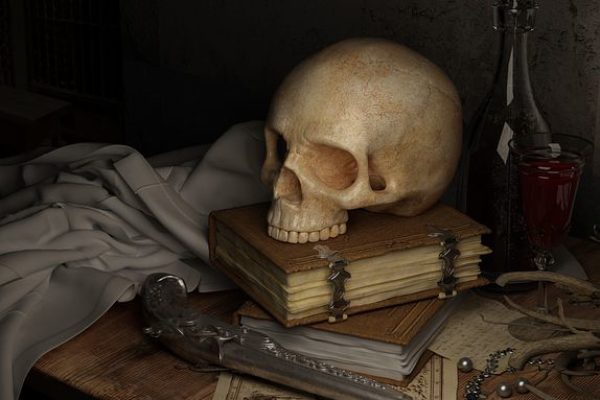Edgar Allan Poe has often been credited with inventing the mystery genre but it gained worldwide acclaim with Sir Arthur Conan Doyle and Sherlock Holmes. Poe’s mysteries, and Conan Doyle’s as well, featured distinct episodes in the life of an unchanging detective. Holmes made Conan Doyle (a physician) both rich and famous. The series ultimately grew to encompass four novels and 56 short stories. It was essentially a static series, in that little in the character’s life and circumstances changed from one story to another. As the series grew, Conan Doyle added detail. Holmes had enemies, Moriarty chief among them, who appeared in recurring fashion. He picked up a brother and some few episodes of his childhood were revealed. Still, Holmes remained as he had begun: enigmatic, mysterious and unchanging. The template was adopted by many others. Dashiell Hammett’s Continental Op, Raymond Chandler and Philip Marlowe. There was Lew Archer and Sam Spade, Travis McGee, Hercule Poirot, Miss Marple and many, many others. People liked the characters and they liked the mystery. They liked immersing themselves into worlds so different from their own. There was a certain comfort in knowing that at the end of the day, the bad guys would lose, the good guys would win, good meal, a stiff drink and a good night’s sleep were the inevitable end to the hero’s day.
But tastes changed. Prior to the 1950’s, the average individual, even in the industrialized West, rarely traveled more than fifty miles from the place of his birth. Television did not become widespread until well after World War II. The world became saturated with entertainment. People grew jaded, then bored. They wanted more from their heroes. They wanted to empathize. They wanted them to have a life and they wanted to vicariously immerse themselves in that life. They wanted the stakes to matter. Today, the format of a series such as Hercule Poirot is generally considered retro and unsatisfactory, if not downright boring. People want a hero whose actions and inventions have a larger meaning, possibly to the world at large but certainly to the heroes themselves. The progressive series was born. What are the most popular such series today? John Sandford and the Lucas Davenport books come to mind. Robert B. Parker’s Spenser. Lawrence Block and Matthew Scudder. Sara Paretsky and V. I. Warshawsky. Sue Grafton and Kinsey Milhone. Many others. The point is that these characters change, maybe slowly, but they do change over the course of the series. They accumulate spouses or at least significant others. They are injured and the injuries leave scars that haunt them from book to book. They change jobs. They get rich or they get poor. They grow old.
There are some weird and usually unsatisfactory hybrids. Spenser, for instance, started with The Godwulf Manuscript, in 1973. Spenser was depicted as fully mature. I seem to recall that his age was given as 37. Over the course of the 40 years prior to his death, Parker wrote 40 novels in the series. Spencer accumulated a girlfriend, Brenda Loring, who lasted for a few books. He became friends with Hawk, at first awkwardly and with suspicion. He gained a huge cast of supporting characters, such as Vinnie Morris, Cholo, Teddy Sap, Frank Belsing, Martin Quirk and others. He gained a second girlfriend, Susan Silverman, who started out as a High School guidance counselor and ultimately morphed into a Harvard trained clinical psychologist. Spenser loses Susan, who finds his ardent love too stifling, and then he gets her back. The two drift through time, eating gourmet meals, interacting with the events of the day, yet somehow never growing old. Spenser was a soldier in Korea. He fought Jersey Joe Walcott for the title. Yet by the time Parker died, Spenser, Hawk and Susan were still good looking, still tough, athletic, dangerous and still, somehow, early middle age. But they did change over the course of the series, at least until they reached a satisfactory place. The reader knows a lot about their lives. The reader can empathize with the characters.
The Elvis Cole series by Robert Crais started out as a Spenser clone. Elvis fought in Vietnam. His best friend and partner is a mercenary ex-cop named Joe Pike. Over the first ten or so books, Elvis gets a girlfriend, Lucy Chenier, a lawyer. Then the two break-up, though they are still apparently in love, because Lucy cannot stand Elvis’ violent life. As with Spenser, they seem not to age. Now, episode follows episode and the characters have ceased to grow and change, and my affection for the series, which was once one of my favorites, has largely vanished.
Marvel beat DC, some years back, because their characters had lives, strange lives but still, they were lives. We could appreciate the daily travails of Peter Parker or Tony Stark’s Byronic angst or Bruce Banner’s constant misery over his inner beast. They were more interesting characters than Clark Kent or Bruce Wayne, and DC was in trouble…until they figured out the formula and gave their characters lives of their own.
In the end, all series have a beginning and today, at least, most have an end, or if they don’t actually end, an ending can be perceived in the distance. Growth, age, change; these are the things that the reader relates to and wants to see.





![The Cannibal's Feast by [Katz, Robert I.]](https://i0.wp.com/images-na.ssl-images-amazon.com/images/I/51ssqOU9iTL.jpg?resize=314%2C500&ssl=1) Nothing philosophical or particularly profound today, just a happy announcement! The
Nothing philosophical or particularly profound today, just a happy announcement! The 





